How We Design & Film Online Courses
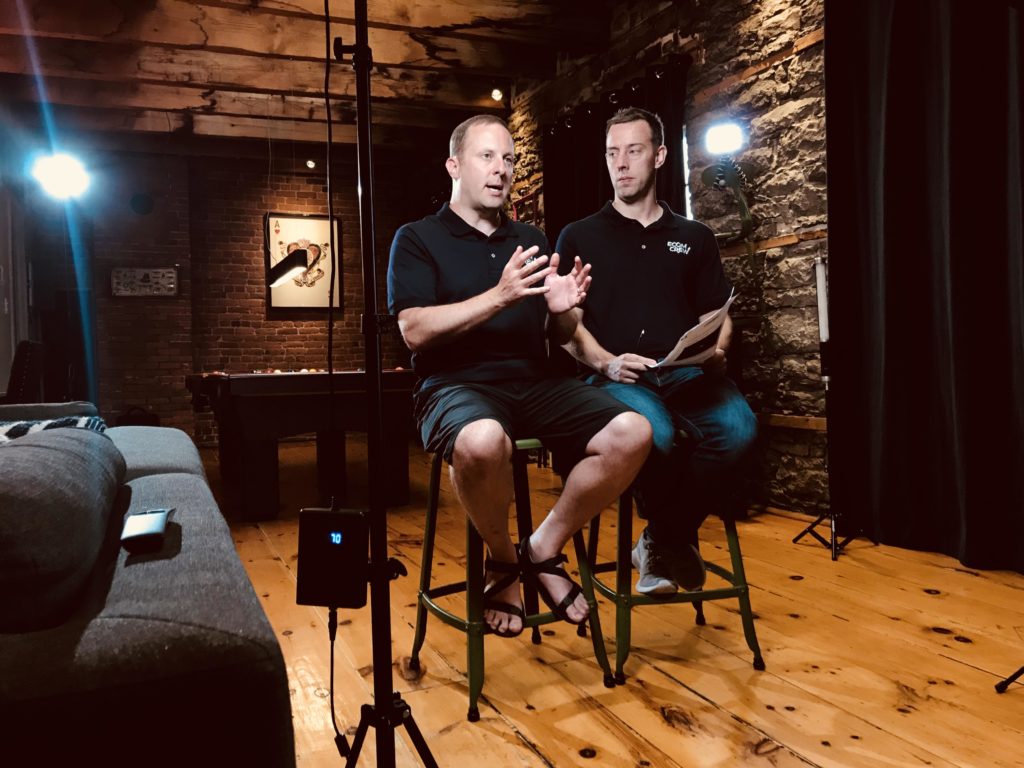
There's a ton of work that goes into designing an EcomCrew course. In this post, we'll give an overview of exactly how we plan, record, edit, launch, and manage our courses. This article is designed not simply as a plug for our courses (although you should, of course, check out EcomCrew Premium if you're not already a member!) but also as a guide for creating your own digital content. Even for those running purely ecommerce companies, adding a digital product is a great way to boost your profit margins and diversify your business.
Related Listening: Episode 148: How Digital Products Can Bolster Your Ecommerce Business
What Learning Management System (LMS) We Chose
Over the course (excuse the pun) of around three years, we've finally decided on Kajabi as our teaching platform of choice. Kajabi is easily one of the best SaaS products I have ever used in terms of value, ease of use, and functionality. The closest thing that rivals it is potentially Shopify. There are some quirks with Kajabi, specifically with tracking and analytics, but aside from these, it's nearly perfect.
We've tried Teachable, Clickfunnels, and Learndash as teaching platforms and none of them can even begin to touch the functionality of Kajabi.
The First Step – Creating Our Course Outline
The first step in our course design is preparing a course outline. This is basically a table of contents for the course. All five members of our team are involved in crafting this course outline. It normally begins with myself creating a draft course outline in a discussion within Basecamp and then all of our team members debating and revising this course outline until we all come up with something we're happy with.
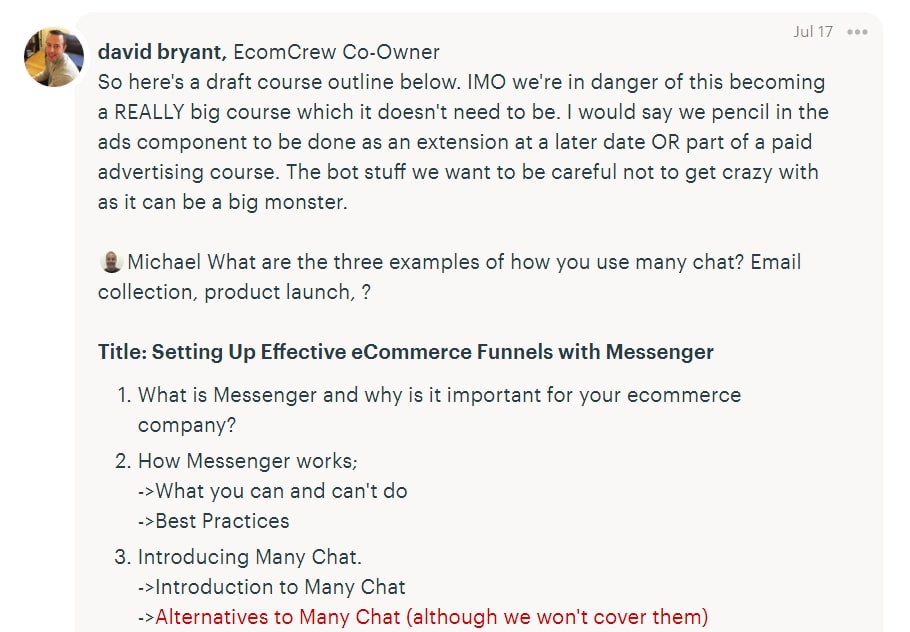
The biggest conflict during the course outline creation we have is deciding on how broad or narrow the course is going to be. There is always a tendency for scope creep meaning that courses get larger than originally planned. However, the general consensus on online learning is that the most effective courses should be chunky and address very specific problems. Our ultimate goal is for a course to be around 20 videos with each video being 20 minutes or less (and ideally 10 minutes or less).
Our Preferred Format for Recording Videos – Screens Shares with On-Camera Introductions
Over the past year or so, we've tried several different recording formats for our lessons:
- Mike and myself co-recording videos over Skype
- Mike and myself co-recording videos live
- Individual (Mike or myself) recordings on camera
- Screen shares
- On-camera lesson introduction followed by screen share
Ultimately we've decided the final format, screen shares with on-camera introductions, is the best format. We've found two people recording a lesson is distracting and, if using Skype, the quality is unreliable. Also, videos that are completely on-camera are often not demonstrative enough, especially in the context of an ecommerce topic which is very hands on. However, screen shares without ever seeing the presenter are too impersonal – hence why we've decided on a brief on-camera introduction followed by a screen share.
The major downside to the format we've chosen is that it still requires a studio setup for the on-camera introductions. We've made a commitment to have the best quality ecommerce courses on the planet and recording with a webcam in our spare bedroom doesn't cut it. Because everyone on our team works remotely (San Diego, Vancouver, Montreal, and Cebu) this means we all need to meet somewhere. For our latest course, Mike and myself both flew to Montreal for 4 days to record in a rented Air BnB with our designer, David Couillard (who lives in Montreal).
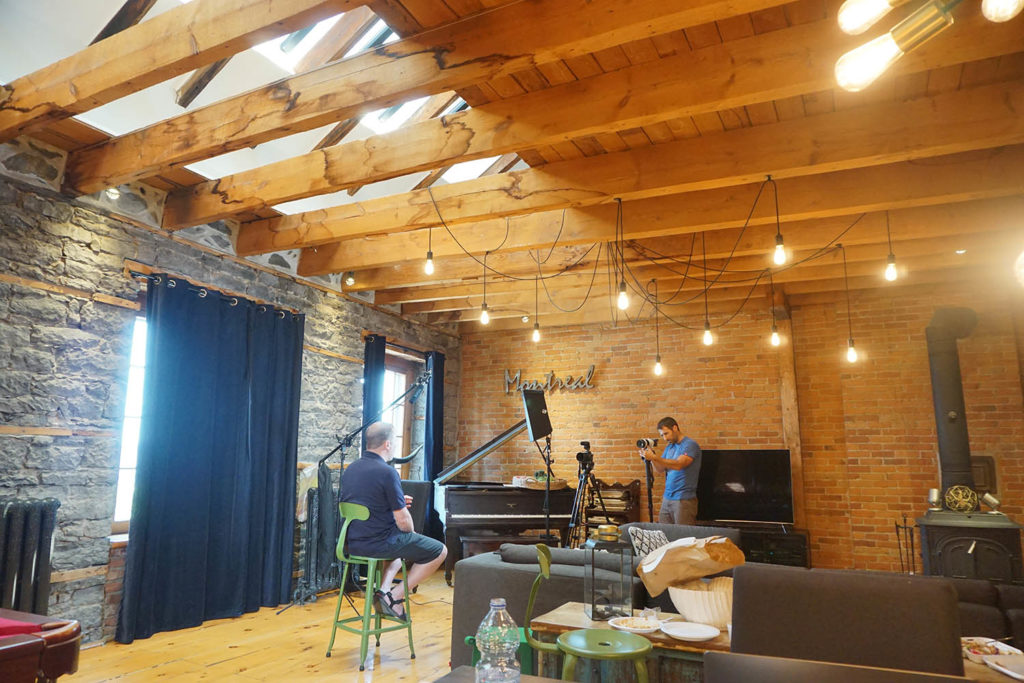
While we're recording course content we also record the promotional videos for our courses. We have a lot of internal debate about the effectiveness of video on our landing pages and the jury is still out on this. However, there is no denying the effectiveness of Facebook video ads in our marketing efforts. We've yet to find a way to successfully target cold traffic although this hasn't been a focus of our efforts. In general, people will not purchase without feeling like they know the instructors and that's built over a long period of time.
Recording Videos – Our Tech Stack (and other Gadgets!)
Here's the fun part – the tech we use to record our courses.
Video
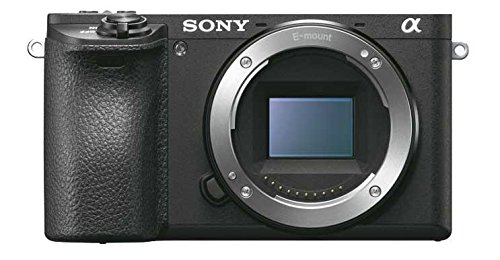
We use a mirrorless Sony A6500 as our main camera focused on whoever is presenter. We have a secondary Sony A6300 on a monopod that will move around with it using a few different angles or zooming on hands or objects. The Sony A6000 is a perfectly acceptable model which is much cheaper.
We also use a Rode Mic on the A6500 so we can capture some decent sound for syncing in Final Cut Pro X (the actual audio we record with a lavalier – see below).
Lenses
Lenses are just as important as the camera.
The majority of the time we're using a fixed focal on the main camera, the Sony 50mm F1.8. On our second camera we use a Sony 24-70 F4 which would also be our recommendation if you can only have one lens.
Lighting
Lighting is as important, not more important, than even the cameras. Our main light is a 1 x 1 Daylight FexLight by Westcott. It's a $650 light without any accessories. As an alternative Falcon Eye makes some decent lights for about half the price.
We also use two Rotolights NEO2 for accent lighting with gel. These are also expensive and could be replaced by cheaper alternatives from Amazon like NEEWER 160 LED CN-160 Dimmable.
Recording/Mics
We use two Lavaliers, Pro JK MIC-J 044 Lavalier Lapel, attached to two independent Zoom H1 digital recorders. This setup is CHEAP – around $100. All audio is recorded separately and mixed with the video in Final Cut Pro X.
Editing Videos and Written Content
Editing videos is another huge time suck from us. Even the simplest videos which simply require stitching introductions and screencasts together take a minimum of 1-2 hours of editing time.
In reality, there is a lot of editing of b-roll photography and videos that need to be done, narration and call-outs and just general cleaning up of videos. We often joke how Mike refuses to ever record a video in more than take, and while it's true, there's inevitably a lot of editing that is still required from deleting pauses, misspeaks, etc.
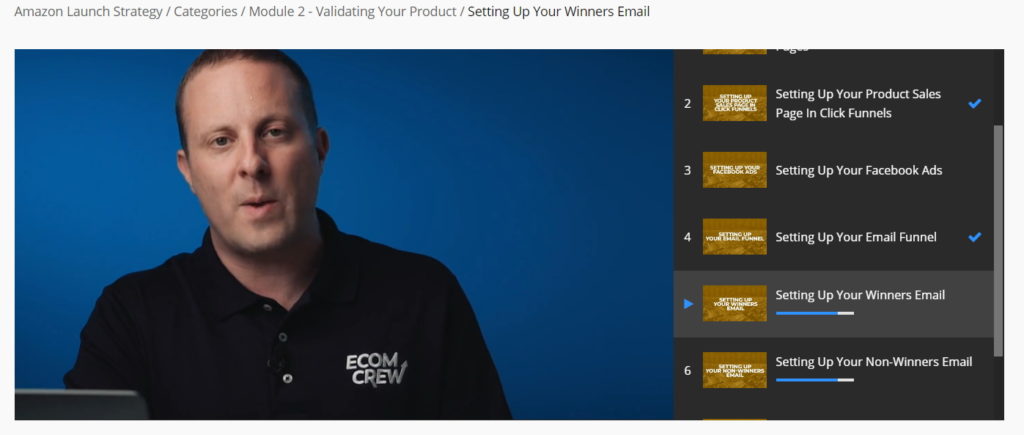
We edit everything in Final Cut Pro X but Adobe Premier is perfectly acceptable if you already have an Adobe Suite. We get all of our music (for intros, outros and occasionally as background music for instructional videos) from Sound Stripe which gives you unlimited download for $135 a year. Here is a great tutorial video on recording interview style videos and Wistia has a ton of good resources as well.
Once the videos are completed, they're uploaded to Kajabi as part of a new product (Kajabi's terminology for ‘course'). With the videos complete we then have one of our virtual assistants in the Philippines transcribe all of the videos into a written e-book that accompanies the video course. Some students prefer to consume our content in video form, some in written form, and some in audio form. It's important to offer multiple options to consume content.
How We Price Our Courses
We have played with several different pricing structures including:
- One-time fee for individual courses, low price point
- One-time fee for individual courses, high price point
- Recurring monthly charge for all courses, medium price point
There is one common opinion from most business-related course designers: higher price points result in more overall revenue. Our first course, launched back in September 2017, started at $199 and we have gradually increased our prices to the current charge of $949-$1908 (depending on the payment frequency). The reason is simple: business courses are a financial investment for people (opposed to, for example, a weight loss course) and people perceive that a greater price will result in a greater probability of success and therefore financial gain. And this logic is actually probably quite true – most course designers offer 30 day refund periods and the higher the price point, the more responsibility that course designers feel to offer higher value.
As mentioned, we now charge a recurring monthly/annual fee. The jury is still out on whether this is a wise decision financially but it definitely does result in a better experience for students as we feel more obligation to add new value to our students each month to avoid cancellations. Aside from new courses and lessons, we offer twice monthly webinars, a Facebook community, and live events. Without a recurring monthly charge, there's no doubt we would feel more complacent in how frequently we updated courses.
People Don't Buy Courses – They Buy Teachers
This was an insight our good friend Steve Chou at MyWifeQuitHerJob.com passed onto us: people don't buy courses, they buy instructors.
Think about all of the great courses you've had whether in high school, university, or elsewhere. The chances are good that your best learning memories pertain to an amazing instructor more than an amazing textbook. You've probably seen some of the ads for MasterClass – their entire business is designed around celebrity instructors like Gordon Ramsay or Steve Martin. Now, neither Mike nor myself is of course near the fame of any of the MasterClass instructors (Mike's aggressively working on that though) but the truth is that someone who reads our blog regularly or tunes into the podcast every week feels some connection with us. Subsequently, we learned very quickly that one of the main selling features of our courses has been direct access to the instructors (aka Mike and myself).
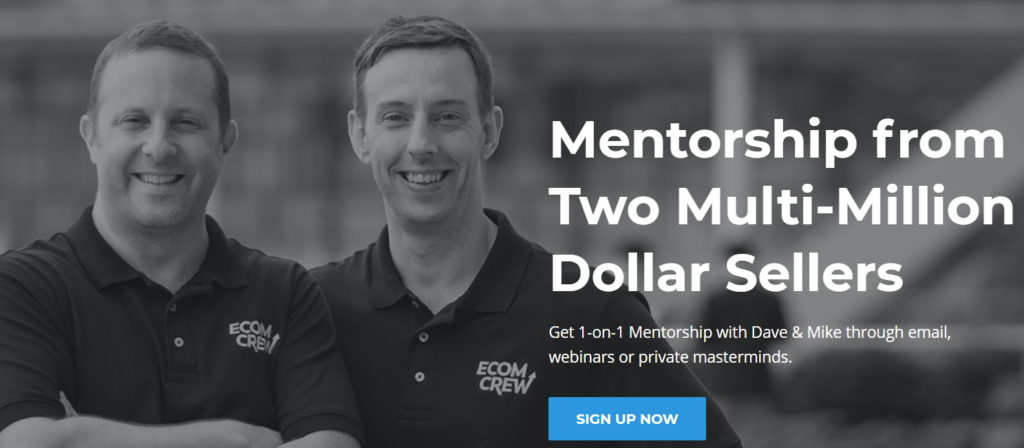
There are many ways to give this exclusive access to instructors – office hours, communities, live events, etc.. However, we've found the best way to do this is by offering unlimited 1 on 1 email support.
The Course Launch
This is the moment we've been working for! The course launch. At this point, hundreds of hours have been put into the design of a course. Our course launch looks like this:
- An aggressive email campaign, 3-5 emails over a period of 5-10 days
- Promotion of the course in the podcast introduction
- Facebook remarketing campaign
The absolute most effective strategy we've found is an aggressive email campaign combined with scarcity. Facebook ads and our podcast are critical for branding and trust purposes but ultimately most people will purchase via email. Some sort of scarcity is also critical as courses, for most people, are a discretionary purchase. We prefer to keep our courses evergreen for a variety of reasons and we find the best scarcity strategy is to offer a discount with a timer.
For our course launches, we aim for a minimum of 3 emails. We have yet to find a point where more emails are not more effective (and this relates back to much of our experience in ecommerce as well). However, we try to be respectful of our audience and after 3 emails unsubscribe rates start to become high.

The only type of paid advertising we do is through Facebook remarketing ads. We target people based on whether they have visited EcomCrew and/or whether they have visited our sales page. Unsurprisingly, people who have visited our sales page convert at about half the cost of generic website visitors. We've yet to find an effective way to cost-effectively target cold traffic.
Overall, people who hit our landing page convert at about 3%. This is not bad (and it would be tremendous for one of our ecommerce companies) but the majority of people who see our landing page are very warm leads. They're generally heavy consumers of our free content, either our podcast, blog, or videos.
How Much Money Do We Make?

An aggressive course launch will generally net us around 25-50 purchases. This equates to around $15,000-25,000 over a roughly 1-week period based on approximately 5000 email subscribers. In June we changed to a monthly subscription model, which has meant less immediate revenue but, hopefully, greater revenue in the long run as long as our churn rate remains low. In order to keep that churn rate low, we're continuously trying to add more member benefits including new content, new courses, more community features, member discounts/perks, etc.
Truth be told, our revenue is not yet anywhere close to where Mike or myself hope for it to be (we have a goal of $1million in annual income). EcomCrew has been a nearly 5-year project that we've only recently begun to monetize – if we calculated our wages on an hourly basis we would financially be better off getting jobs at Amazon FBA warehouses! However, EcomCrew continues to be the most rewarding business either Mike or myself has ever run.
Conclusion
Overall, the course design and creation process can easily be upwards of 100 hours of work. Along with the course work, however, there is also a lot of time that goes with helping and mentoring students. The good thing is that we've discovered, rather unsurprisingly, that the students who reach out for help are overall more engaged and not only spend more money with us but also are more active participants in our webinars and Facebook community.
Do you have any questions about designing and creating online courses? If so, feel free to ask in the comments box below. And if you'd like to see our own collection of courses head on over to EcomCrew Premium.
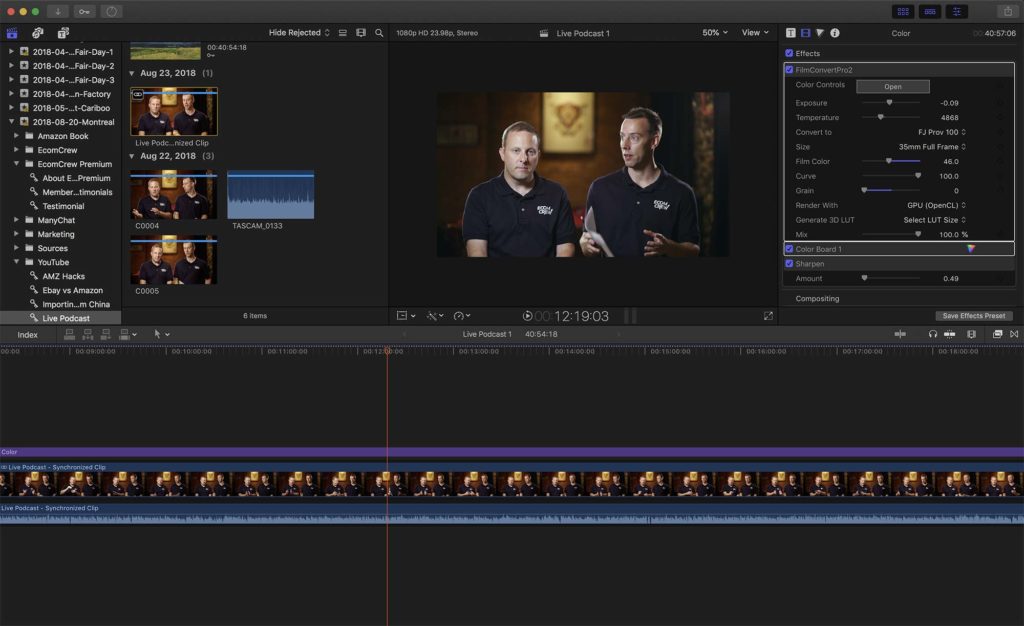




Great information Dave!
Thanks Joe!
Your stuff is great!
Thanks
Great content ! since we are talking about video already, what is the best strategy to making amazon product videos that may be used as Facebook video ads ? Any freelancers/style you recommend ?
Thanks for the post ! awesome content as always, love your podcast by the way.
Hi Colin,
A lot of requests for this – we’ll try doing something at some point.
Wow, the amount of work you put in your course is staggering. No wonder you guys come so well-recommended!
20 mins sounds perfect to me. I usually pause the video, take notes, write down other ideas and the whole thing can stretch into an entire hour. Besides, if it’s a lot of new info anything more than half an hour just becomes tiresome.
There’s another way to build a relationship with your audience but it’s very VERY time consuming: a free facebook group where you can post updates, reply to questions & stuff like that. But you’d have to be careful about who you let in AND work on a who posts what plan.
I do have one question:
HOW do you guys pull off the whole “working remotely” thing?
I’d love an entire article on that one.
Thanks again! The working remotely one is a monster article. We’re in the process of somewhat addressing this in a massive hiring VAs article we’re doing.